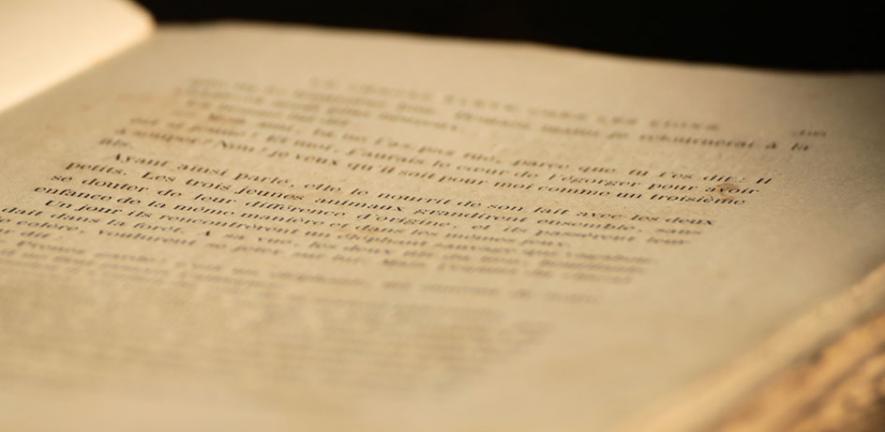
The early works of Jane Austen may not be as well remembered as her six novels, but as Janet Todd explained, they reveal a sense of the absurd which helps us to understand both the young writer and the mind behind her best-known work.
The early works of Jane Austen may not be as well remembered as her six novels, but as Janet Todd explained, they reveal a sense of the absurd which helps us to understand both the young writer and the mind behind her best-known work.
the surrealism that appears in this early work is in many ways what is missing from the realism of her later novels. These stories featured characters who were gluttonous, lascivious, physically excessive and frequently drunk.
Those for whom Colin Firth stripping off and jumping into a pond in the 1990s serialisation of Pride And Prejudice remains the defining image of Jane Austen's work may have had their own ideas about what her "uncensored" side might entail. What Janet Todd in fact offered in this series of annotated readings revealed a remarkably pronounced sense of the absurd and an almost Pythonesque sense of humour which characterised her work from the beginning, and allows us to see the novels for which she is best remembered in a new light.
Todd, who edited the Cambridge edition of Austen's works, did so expecting to have the chance to re-examine those six novels herself. Her fellow contributors bagged the lot, however, leaving her with the lesser-known manuscripts and, in particular, Austen's juvenilia. "As I got into it I found it more and more interesting," Todd explained to a packed Guardian tent at Hay this afternoon. "There is much more to Austen than her novels."
Many of the early works in particular were suppressed both later in Austen's own life and after her death because they were deemed to be unladylike. In fact, they fit very well with the Jane Austen who emerges from her later books. "They are wonderful and extraordinary writings," Todd explained. "By the age of eleven, she was already looking at the adult world with mocking eyes and was already amused by the conventions of adult behaviour." She was, it seems, already sensible of the ability of words to move people to tears, as well.
It is Austen's sense of the absurd which really emerges from her juvenilia - as Todd put it, the surrealism that appears in this early work is in many ways what is missing from the realism of her later novels. These stories featured characters who were gluttonous, lascivious, physically excessive and frequently drunk. The criminal became usual and in spite of their behaviour, the characters which sprang from her young mind rarely showed any shame.
In many cases, the fast-paced and apparently directionless routes that these early stories' plot-lines took mocked the romantic fiction Austen would have encountered as a child, as well as the adult world they were supposed to represent. One early skit follows Frederic and Elfreda, for example - a couple who are in love but too refined to mention it - and a friend, Charlotte, who eventually makes her way to her aunt's house in London, agrees to successive proposals from two different men because she cannot bear to be a source of unhappiness to them, realises that she has embroiled herself in a double engagement, throws herself in a river, drowns, floats to a nearby village and is buried.
The plot of "Henry and Eliza" is no less contorted. It begins with the discovery of Eliza as a baby by one Lady Harcourt. She is adopted by the Harcourts, raised to the age of 18, and then cast out for stealing a £50 banknote (in spite of which she remains "happy in the knowledge of her own excellence"). She then falls in with the Duchess of F- (age 43 and a half), marries her would-be husband Henry and flees with him to the continent pursued by 300 men. Three years later she returns, widowed, with two children. She is imprisoned, escapes, sells her clothes to buy toys, and forgets to buy food, which she realises when her children begin to eat her. Desperately, she returns to the Harcourts, where the Lady who discovered her realises she is her own daughter after all, whom she hid as a baby from the Lord of the manor fearing that he wanted a son, and subsequently forgot about.
This combination of farce and mockery continued throughout Austen's early work. As well as the romantic fiction of the time, the young Jane lampooned the "moral lessons" many contemporary novelists sought to proffer their audiences via similarly contrived plots, as well as the apparent vanity (not to mention the continual fainting) of their female leads. She also makes fun of the slow and laboured descriptions characteristic of the fiction of the period, writing one story in which a family of three spend a series of tortuous paragraphs wondering about who might be knocking at their door and whether or not to respond.
Todd argued that in these early writings we find a sense of humour that never abandoned Austen, but was simply distilled and used in a more sophisticated manner in the course of her later work. Even at the end, when Austen was desperately ill, she was busy mocking hypochondriac characters with the same illness from which she thought herself to be suffering. Perhaps more significantly, the surrealism of this early work may similarly have underpinned novels like Pride And Prejudice in their early draft forms, before, as Todd said, Austen "lopped and cropped them".
Would these works have been better had Austen allowed more of her harebrained and irrational tendencies to creep in, an audience member wondered in the Q&A? "I don't think they could be better," Todd reflected, suggesting that we maybe see a hint of these qualities in characters such as Mr. Collins. Bits of the early Austen were forever slipping through in this sense. "I do wish she had written a few more skits," Todd added.
This work is licensed under a Creative Commons Licence. If you use this content on your site please link back to this page.





